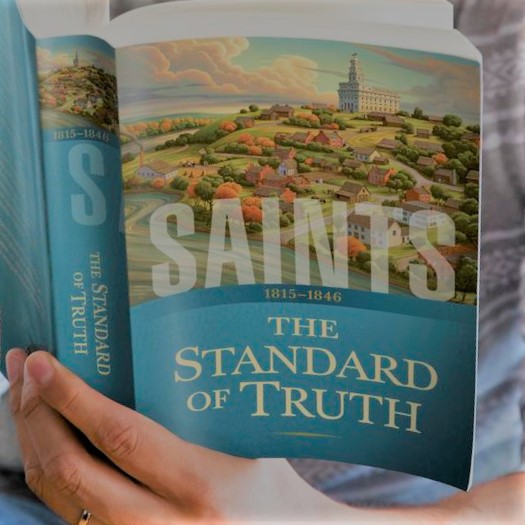S A I N T S: “SAMUEL LAWRENCE: OUT CONNED”
“Local treasure seekers also knew it was time for Joseph to get the record. Lately one of them, a man named Samuel Lawrence, had been roaming the hill, searching for the plates. Worried that Samuel would cause trouble, Joseph sent his father to Samuel’s house on the evening of September 21 to keep an eye on him and confront him if it looked like he was going to the hill.”
Saints: The Standard of Truth 1815-1846 – Volume 1 (Salt Lake City, UT: The Church of Jesus Christ of Latter-day Saints, January 2018), 37.
There is a bit more to the story of Samuel Lawrence to be considered:
“Joseph believed that one Samuel T. Lawrence was the man alluded to by the spirit, and went with him to a singular looking hill, in Manchester, and shewed him where the treasure was. Lawrence asked him if he had ever discovered any thing with the plates of gold; he said no: he then asked him to look in his stone, to see if there was any thing with them. He looked, and said there was nothing; he told him to look again, and see if there was not a large pair of specks with the plates; he looked and soon saw a pair of spectacles, the same with which Joseph says he translated the Book of Mormon. Lawrence told him it would not be prudent to let these plates be seen for about two years, as it would make a great disturbance in the neighborhood. Not long after this, Joseph altered his mind, and said L[awrence]. was not the right man, nor had he told him the right place. About this time he went to Harmony in Pennsylvania, and formed an acquaintance with a young lady, by the name of Emma Hale, whom he wished to marry.–In the fall of 1826, he wanted to go to Pennsylvania to be married; but being destitute of means, he now set his wits to work, how he should raise money, and get recommendations, to procure the fair one of his choice. He went to Lawrence with the following story, as related to me by Lawrence himself. That he had discovered in Pennsylvania, on the bank of the Susquehannah River, a very rich mine of silver, and if he would go there with him, he might have a share in the profits; that it was near high water mark and that they could load it into boats and take it down the river to Philadelphia, to market. Lawrence then asked Joseph if he was not deceiving him; no, said he, for I have been there and seen it with my own eyes, and if you do not find it so when we get there, I will bind myself to be your servant for three years. By these grave and fair promises Lawrence was induced to believe something in it, and agreed to go with him. L[awrence]. soon found that Joseph was out of money, and had to bear his expenses on the way. When they got to Pennsylvania, Joseph wanted L[awrence]. to recommend him to Miss H[ale]., which he did, although he was asked to do it; but could not well get rid of it as he was in his company. L[awrence]. then wished to see the silver mine, and he and Joseph went to the river, and made search, but found nothing. Thus, Lawrence had his trouble for his pains, and returned home lighter than he went, while Joseph had got his expenses borne, and a recommendation to his girl.”
Willard Chase, Sworn Statement – 11 December 1833 – Manchester, Ontario County, New York, NY. See Eber D. Howe’s Mormonism Unvailed (Painesville, OH: Self-Published, 1834), 243-244.
RE-rewrite: “Local treasure seekers also knew it was time for Joseph to get the record. Lately, Samuel Lawrence, a man from whom he swindled money, had been roaming the hill, searching for the plates to help the young Prophet pay his bad debts. Worried that Samuel would cause trouble, Joseph sent his father to Samuel’s house on the evening of September 21 to keep an eye on him and confront him if it looked like he was going to the hill.”

